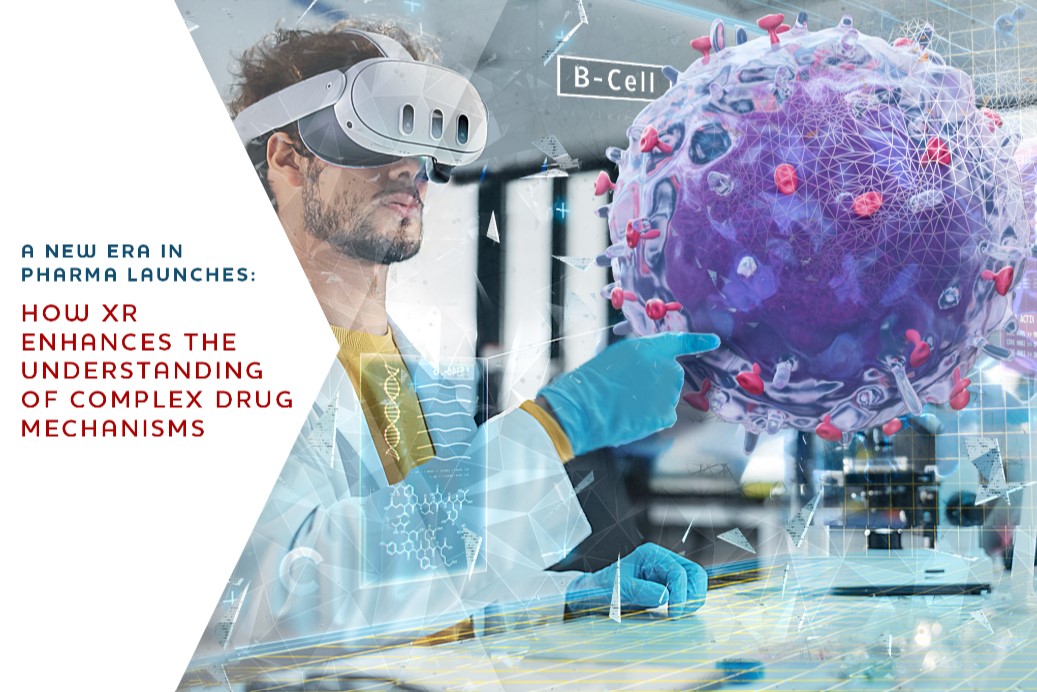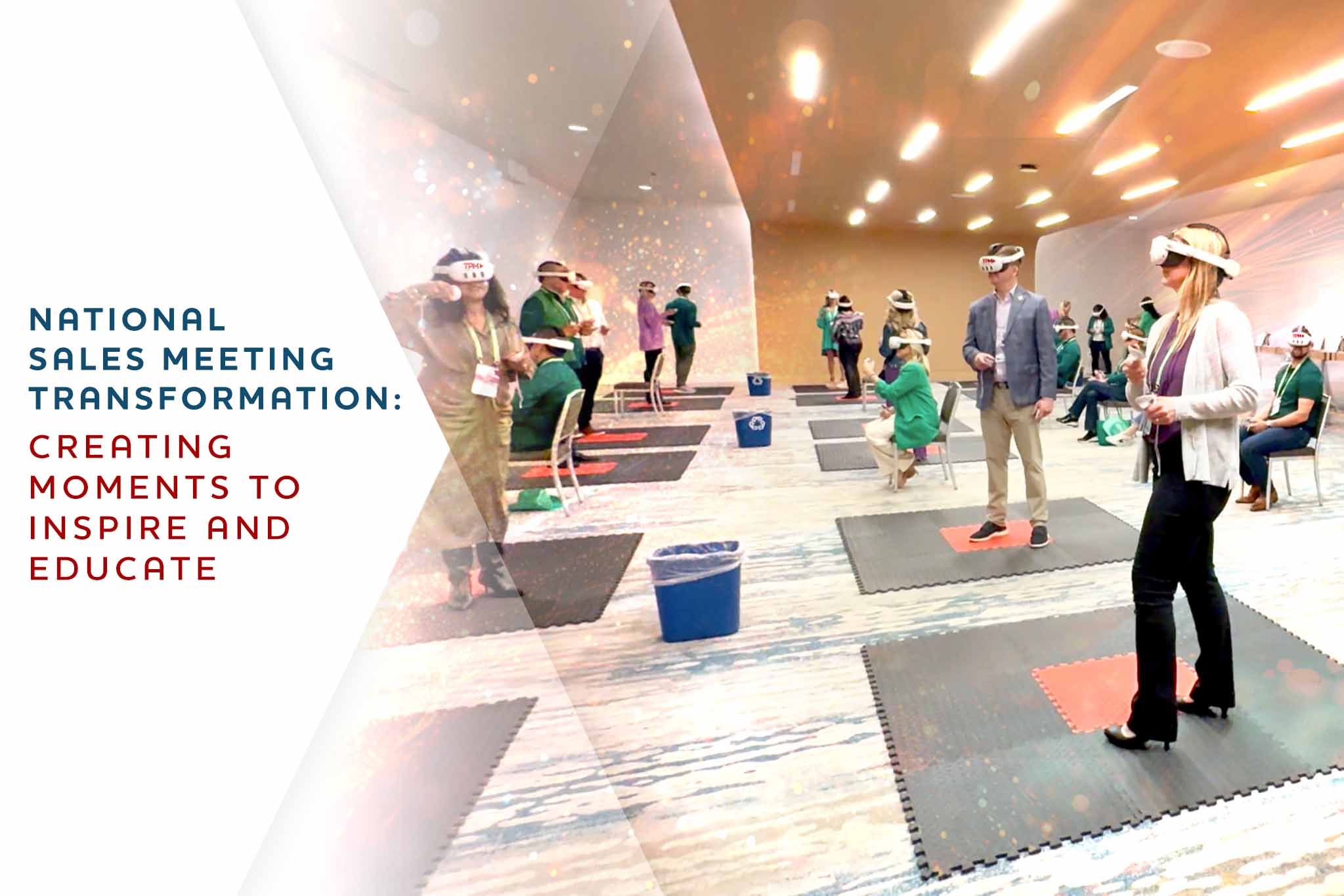A New Era in Pharma Launches: How XR Enhances the Understanding of Complex Drug Mechanisms
Revolutionizing Pharmaceutical Marketing with Extended Reality
The pharmaceutical industry faces unique marketing challenges that can hinder effective communication and product promotion. Strict regulations, complex client relationships, and fierce competition create a demanding environment that requires innovative solutions. However, Extended Reality (XR) technology offers a groundbreaking approach to overcoming these obstacles. XR can effectively showcase medical products and improve communication with healthcare professionals (HCPs). Whether you are involved in sales or manage a medical-scientific business, integrating XR into your marketing strategy can yield significant benefits.
For instance, imagine a pharmaceutical company launching a new drug aimed at treating a rare disease. By utilizing Virtual Reality (VR), they can create an immersive experience that allows HCPs to explore the drug’s mechanism of action in a 3D environment. This not only enhances understanding but also fosters a deeper emotional connection to the product. Augmented Reality (AR) can further enhance HCP interactions through immersive product demonstrations, XR-enhanced e-detailing, and innovative engagement techniques. These technologies can transform traditional marketing methods into dynamic experiences that resonate with the audience.
The Evolution of Global Product Launches in Pharma
The pharmaceutical landscape is rapidly evolving, with successful product launches playing a crucial role in driving innovation, addressing patient needs, and maintaining competitiveness. Global product launches in the pharma industry have become increasingly sophisticated, requiring meticulous planning and coordination across multiple markets and stakeholders. As the industry pushes the boundaries of scientific discovery, understanding key challenges and strategies for successful global product launches is essential.
XR technologies are becoming instrumental in this context. By leveraging XR, pharmaceutical companies can create immersive experiences that not only showcase their complex products but also facilitate deeper engagement with HCPs and patients. For example, during a global launch event, a company could use AR to allow attendees to visualize how a new drug interacts with specific cells in the body. This innovative approach enhances the effectiveness of product launches, making them more memorable and impactful.
The Critical Role of Successful Pharma Product Launches
Successful global product launches in the pharmaceutical industry are vital for several reasons:
Fostering Innovation: New product launches introduce groundbreaking treatments and technologies that can transform patient outcomes. XR amplifies the innovative nature of these products, allowing for more interactive and engaging presentations of complex drug mechanisms. For instance, a company could use VR to simulate the effects of a new cancer treatment, providing HCPs with a firsthand experience of its potential benefits.
Addressing Unmet Patient Needs: Effective global launches ensure innovative medicines reach patients in need, addressing critical healthcare gaps. XR helps visualize complex medical information, making it easier for patients and HCPs to understand new treatments’ benefits and mechanisms of action. By presenting data in an engaging format, companies can better communicate the value of their products.
Securing Competitive Advantage: In a highly competitive market, successful launches help pharmaceutical companies maintain market share and differentiate their offerings. Utilizing XR provides a unique selling proposition, setting companies apart by offering cutting-edge technology in their marketing efforts. For example, a company that incorporates AR into its promotional materials can create a more engaging experience that captures the attention of HCPs.
Generating Revenue: Successful product launches are crucial for generating revenue and sustaining long-term financial viability, enabling investment in future R&D. By incorporating XR into marketing strategies, companies can enhance customer engagement, potentially leading to increased sales and profitability. A well-executed XR campaign can create buzz around a new product, driving interest and ultimately sales.
Overcoming Marketing Challenges in Pharma Product Launches
As the mechanism of action of a complex drug can be hard to visualize, it becomes more challenging to communicate its value to the end users—who often do not have a scientific background. Launching a new pharmaceutical product globally presents unique challenges that require strategic planning and execution. Key marketing challenges include:
Complexity of Information: The intricate nature of drug mechanisms can make it difficult for HCPs and patients to grasp the full benefits of a new treatment. XR can simplify this complexity by providing visual representations that make the information more accessible.
Regulatory Constraints: The pharmaceutical industry is heavily regulated, which can limit marketing strategies. However, XR can be designed to comply with these regulations while still delivering impactful messages.
Engagement with Diverse Audiences: Different stakeholders, including HCPs, patients, and payers, require tailored messaging. XR allows for customizable experiences that can cater to the specific needs of each audience segment.
Budget Limitations: While XR technology can be costly, the long-term benefits often outweigh the initial investment. Companies that embrace XR can see a significant return on investment through enhanced engagement and increased sales.
Stakeholder Engagement and Alignment
Effectively engaging diverse stakeholders, including HCPs, patients, and payers, is crucial. XR facilitates this engagement by providing interactive platforms for stakeholders to explore new products and their complex mechanisms. For example, a pharmaceutical company could host a virtual roundtable where HCPs can interact with a 3D model of a new drug, allowing them to ask questions and receive real-time feedback from experts.
Competitive Differentiation
Standing out in a crowded market and effectively communicating a product’s unique value proposition is essential. XR enhances product demonstrations, making them more engaging and informative, thus helping to convey the product’s unique benefits and mechanisms more effectively. By using AR, companies can create interactive brochures that allow HCPs to visualize the drug’s effects on the body, making the information more relatable and easier to understand.
Cultural and Language Barriers
Adapting launch strategies to account for cultural and language differences across global markets is challenging. XR can bridge these gaps by providing localized, immersive content that resonates with diverse audiences, ensuring clear and impactful messaging. For instance, a company could develop a VR experience that showcases a product’s benefits in various cultural contexts, ensuring that the messaging is relevant and effective across different regions.
Executing a Successful Global Product Launch
Effective planning and execution are critical for successful global product launches in pharma. Key steps include:
Localization and Adaptation: Adapt the launch strategy and marketing materials to account for cultural, linguistic, and regulatory differences across target markets. XR can facilitate this localization by allowing for the creation of tailored content that speaks directly to local audiences while maintaining consistency in explaining drug mechanisms. For example, a company launching a new diabetes medication could create localized VR experiences that reflect the dietary habits and health concerns of different regions, ensuring that the messaging resonates with local healthcare providers and patients.
Continuous Monitoring and Optimization: Continuously monitor launch performance and make agile adjustments to address emerging challenges. XR can provide valuable data on user interactions, helping to refine strategies in real-time and improve the communication of complex scientific information. For instance, if data shows that HCPs are struggling to understand a specific aspect of a drug’s mechanism, the company can quickly adapt its XR content to clarify that information.
Post-Launch Support and Patient Engagement: Provide ongoing support and education to HCPs and patients to ensure successful adoption of the new product. XR can enhance post-launch engagement by offering interactive resources that keep stakeholders informed and engaged with the product’s mechanism of action. For example, a company could develop an AR app that allows patients to visualize how the medication works in their bodies, reinforcing their understanding and adherence to the treatment plan.
Key Factors for Pharma Product Launch Success
To achieve successful global product launches, pharmaceutical companies should consider the following key factors:
Stakeholder Collaboration: Foster strong relationships with HCPs, patients, and payers to address their needs and concerns. XR can facilitate these collaborations by providing immersive platforms for discussions and demonstrations of drug mechanisms.
Data-Driven Insights: Leverage real-time data and analytics to continuously monitor launch performance and optimize strategies. XR can provide insights into user engagement and preferences, helping to refine marketing approaches and improve the communication of complex scientific concepts.
Organizational Agility: Cultivate a culture of adaptability within the organization, enabling the launch team to respond quickly to changing market conditions. XR can support this agility by providing flexible tools such as micro modules, that can be adapted to various scenarios and used to explain complex drug mechanisms effectively.
Emerging Trends in Pharmaceutical Innovation and Product Launches
As the pharmaceutical industry evolves, several trends are shaping the future of global product launches:
Personalized Medicine: The rise of personalized medicine is driving the development of targeted therapies, requiring more nuanced launch strategies. XR can play a significant role by providing tailored experiences that cater to individual patient needs and explain complex mechanisms of personalized treatments.
Digital Health Integration: The accelerated adoption of digital health technologies is transforming product launches, distribution, and support. XR can enhance these digital initiatives by providing immersive experiences that engage patients and HCPs, improving understanding of drug mechanisms and treatment protocols.
Cross-Industry Collaborations: Increased partnerships between pharmaceutical companies, biotechnology firms, and technology providers will lead to more complex but potentially more impactful global product launches. XR can facilitate these collaborations by providing shared platforms for innovation and engagement, allowing for more effective communication of complex scientific concepts across different disciplines.
In conclusion, the integration of XR technologies in pharmaceutical product launches signifies a remarkable advancement in how intricate drug mechanisms are conveyed and comprehended. By harnessing the immersive and interactive features of XR, pharmaceutical companies can effectively tackle traditional marketing hurdles, boost stakeholder engagement, and ultimately enhance patient outcomes. For example, a company could utilize VR to allow healthcare professionals to experience a new drug’s effects on the body in real-time, fostering a deeper understanding. As the industry continues to progress, adopting these innovative technologies will be essential for maintaining competitiveness and successfully introducing transformative treatments to the market. Embracing XR not only elevates marketing strategies but also reinforces the commitment to improving healthcare delivery and patient education.



![Experiential Learning for Patients and HCPs Beyond the Pamphlet [2025 Guide]](https://tipmedia.com/wp-content/uploads/2025/04/blogs_october_10-14_1 2.jpg)